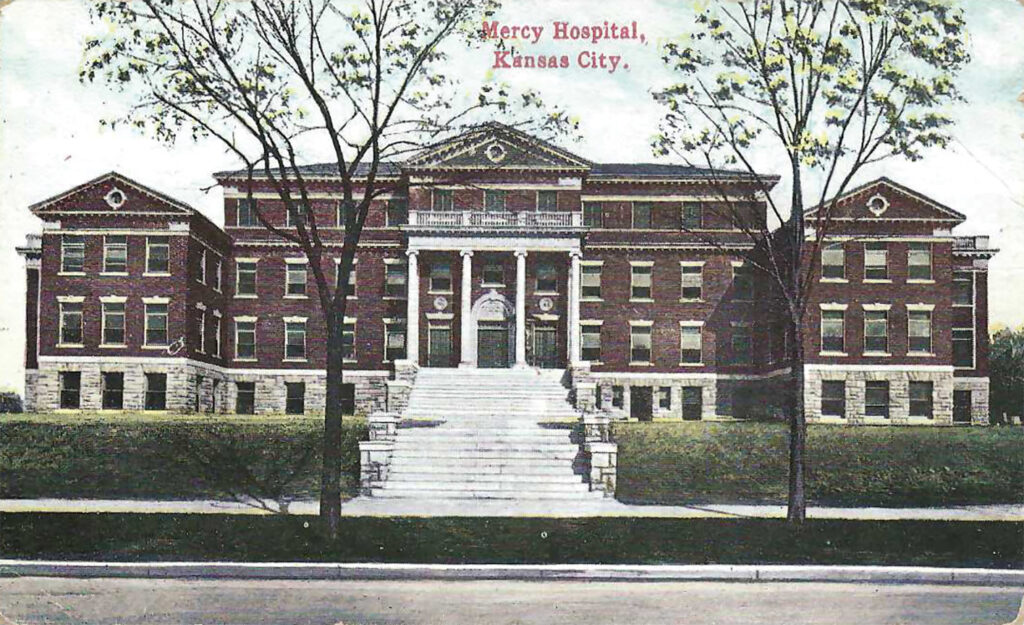
Michael Bushnell
Publisher
Katherine Berry was born in Cave Spring, Ky., in 1860, eight years after her sister, Alice Berry was born to Stephen Berry and his wife. The two would go on to found Children’s Mercy Hospital in Kansas City, one of the region’s most prominent children’s hospitals.
Katherine came by her fierce independence and courage early in life. Her father owned a mill in Cave Springs and was a strong Union sympathizer during the American Civil War, not a popular position in the slave state of Kentucky. When the time came for Berry to pledge his allegiance to the Confederacy, he tacked a note to his door proclaiming his allegiance to the Union. Much like the citizens of western Missouri who were ordered off their land by General Thomas Ewing’s fateful Order No. 11 in 1863, Berry was forced to flee from his home and seek refuge in Ohio, a Union state, for the duration of the war. When he returned following the cessation of hostilities, his mill and his home had been destroyed.
Berry had a profound influence on his daughters, taking them to Pennsylvania to raise them in a more liberal thinking climate. Later in life Dr. Katherine Richardson would often quote her father: “The responsibility of an American extends beyond his own family,” he said. “Wherever you go, it is your duty to make good citizens of your neighbors.” Dr Richardson always gave her father credit for the inspiration behind Mercy Hospital.
The two sisters, both earning doctoral degrees and marrying, moved to Kansas City in 1897 and soon after, opened practices in the city, Dr. Alice Graham with a dental practice and Dr. Katherine Richardson with a medical practice. Both were successful despite the prejudice shown against women in the medical field at that time.
On June 1, 1897, Alice Graham received a phone call from a saloon keeper in the Hell’s Half Acre district of the West Bottoms who knew of the compassion the two sisters had for caring for the city’s poor. The saloon keeper told Alice of a woman who was going door to door trying to give away a five-year-old “crippled girl.”
Without blinking an eye or consulting with her sister, Alice left immediately and began canvassing saloons in the Bottoms until she found the woman with an emaciated five-year-old who had fallen down a staircase the year prior and had been left unattended by her mother. According to published accounts of the day, Dr. Graham confronted the woman, asking, “Do you want to give this child away?” The reply came, “Yes, I’m so tired of her bawling.”
Dr. Graham wrapped the girl in a borrowed shawl, called her sister and took the girl to a small maternity hospital where she rented a bed for $5 a week. The girl was nursed back to health and the sisters ultimately found a good home for the girl. This was the inspiration for the sisters to establish a hospital for crippled children.
The fledgling hospital moved from the original location near present day Truman Road and Cleveland Avenue to larger quarters at 414 Highland Ave. To keep the hospital going, the sisters made wide appeals to thousands of charitable organizations. In the early days, donations came primarily in the form of canned goods, clothing and quilts. Fundraising efforts, such as quilting bees and local bazaars, raised the pennies, nickels and dimes necessary to keep the lights and heat on at the facility. Sadly, in 1913 Dr. Alice Graham succumbed to cancer, leaving her sister to carry on alone.
Richardson persevered and in 1916, on land donated by manufacturing magnate Jemuel Gates, the first Mercy Hospital was opened on the Northwest corner of Independence Boulevard and Woodland Avenue. The cornerstone bears the inscription, “In 1897 Dr. Alice Berry Graham founded this hospital for sick and crippled children to be forever non-sectarian, non-local and for those who cannot pay.”
As homage to the humility and dedication the sisters brought to their work, three Streetcar Motormen working out of the Ninth and Brighton Trolley Barn had the honor of being invited by Dr. Richardson herself to give a brief address at the laying of the cornerstone of the new hospital. Streetcar Conductor C. F. Davidson spoke at the dedication on how the late Dr. Alice Graham would board the #30 streetcar near her home at 121 N. Clinton Place and ride to the City Market with an empty basket under her arm, then return via the streetcar to the hospital with the basket full of provisions for the hospital patients.
Dr. Richardson passed away in 1933, leaving strict instructions that the hospital carry on operations as if it was still under her direction. The hospital operated at 1717 Independence Blvd. until 1970 when it moved to its present location on Gillham Road. Today the building is part of the Kansas City University campus, a college for Osteopathic doctors.
While Dr. Richardson never had children of her own, she dedicated her life to end the suffering of poor and crippled children.
“I don’t want to build monuments of brick and mortar to myself,” she often said while speaking to organizations. “I want to see something done to relieve poor children’s suffering.”
















